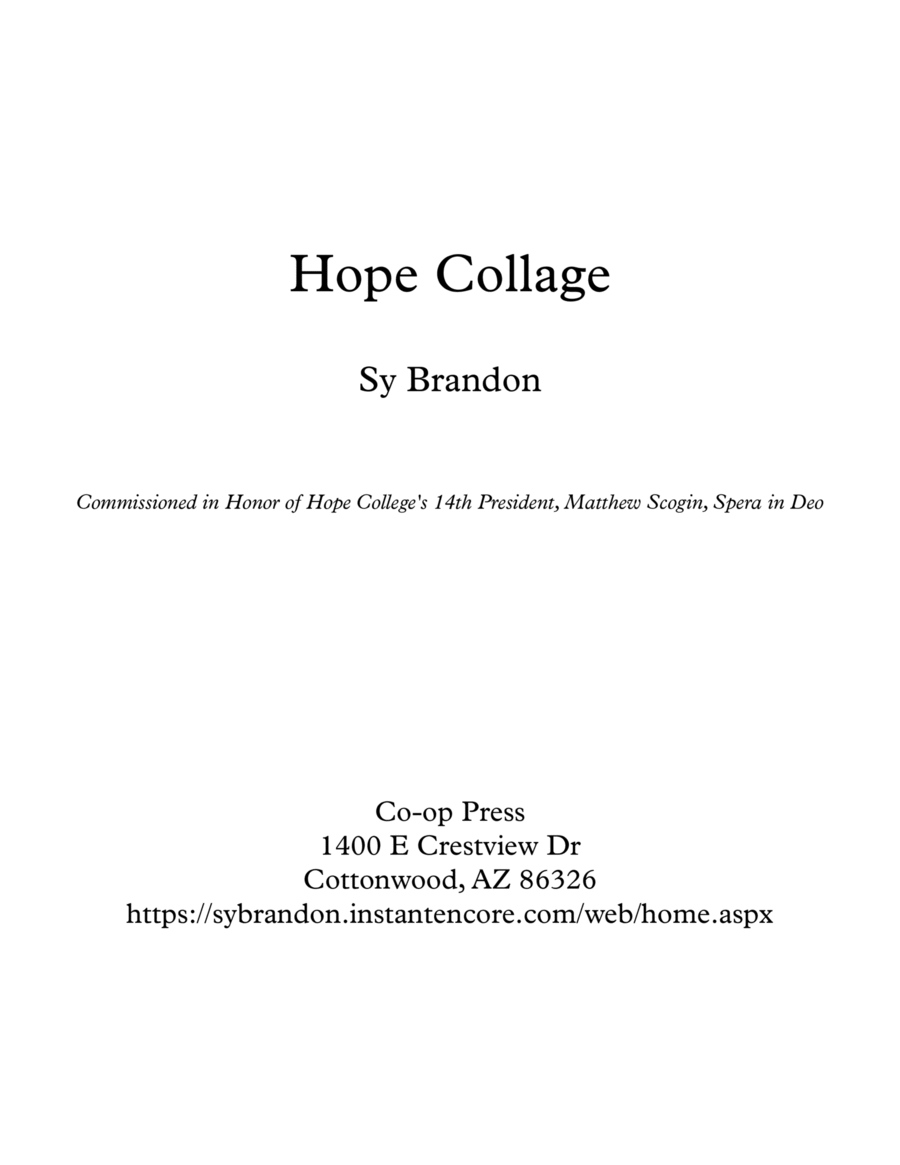Saxophone Ensemble,Woodwind Ensemble - Level 4 - Digital Download SKU: A0.755338 Composed by Sy Brandon. 20th Century,Contemporary. 81 pages. Sy Brandon #6619959. Published by Sy Brandon (A0.755338). Hope Collage was commissioned in honor of Hope College's 14th President, Matthew Scogin. President Scogin was inaugurated in 2019 and exemplifies the qualities of hope represented in this piece. The first movement Castles In The Sky is in 6/8 meter with some of the syncopated rhythmic figures that pit 3/4 against the 6/8. The major tonality is disguised by chromaticism either in the melody or in the counterpoint and harmony. The form is basically AB with a Coda. The slow second movement A Light at the End of the Tunnel has the tenor and baritone saxophones representing the darkness of the tunnel using minor and slightly dissonant harmony. The light at the end of the tunnel is represented by the alto and soprano saxophones. Even though they are still in minor, their brightness and rising arpeggios represent a glimmer of hope. By the time the movement nears the end, optimism has taken over and the entire ensemble is in shifting major tonalities leading up to the quiet, yet, prayerful end in B major. The third movement Knock On Wood has a Scherzo quality and is at an allegro tempo. The opening theme sets the tone of optimism with its combination of quartal, quintal, and triadic harmony along with staccato articulation. It is answered by the saxophones doing rhythmic slap tongue in a pyramid formation that represents knocking on wood. The theme and its variations alternate with the slap tongue throughout most of the movement. In several places, the theme and slap tongue appear in canon. Towards the end, the theme becomes fragmented and the slap tongue dominates. The fragments become pieced together leading to a final outburst of 16th note joy before the last chord. The movement ends with foot stomps that rhythmically suggests knock on wood. The last movement Promised Land is in two parts. The first is meditative and prayer-like in a moderate tempo. It has a passacaglia bass line and contrapuntal lines are added above it. It also grows in intensity until it reaches the Allegro, which is the second part and is celebratory. The Allegro begins with a sixteenth note motif that plays an accompaniment role in many places throughout the last section to the slower moving declarative lines. Near the end, motifs from the Moderato section are transformed in the Allegro, therefore linking the two sections.
